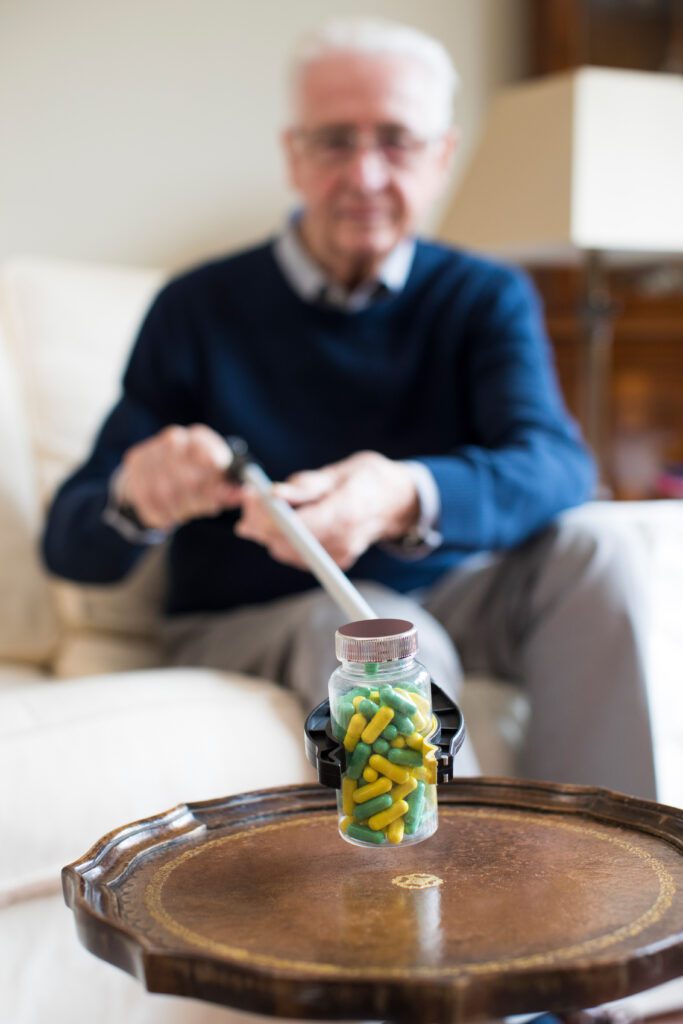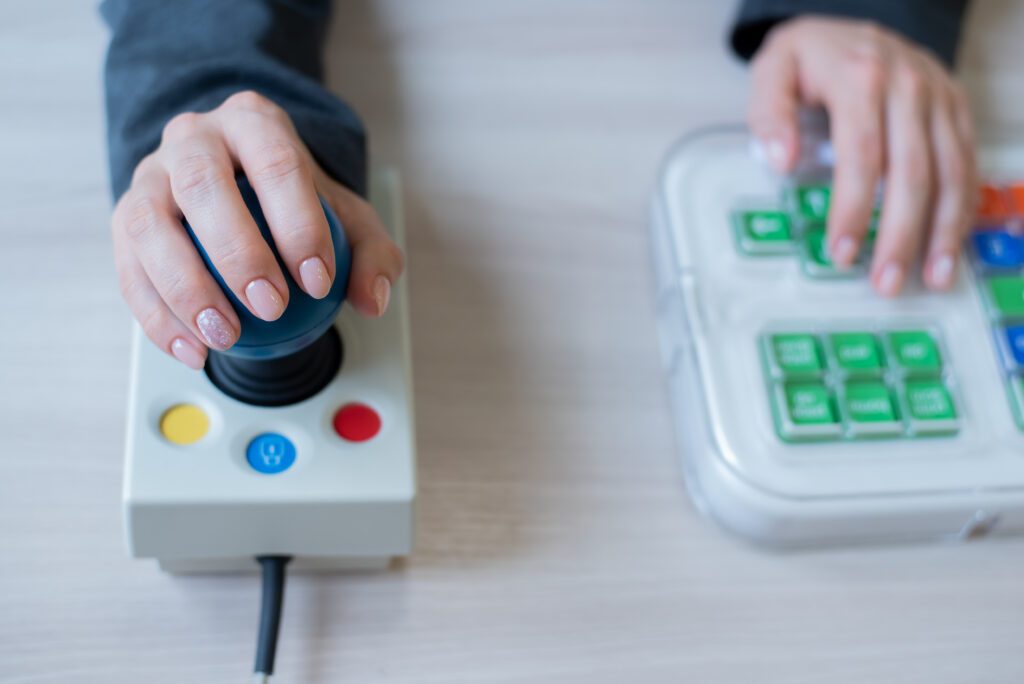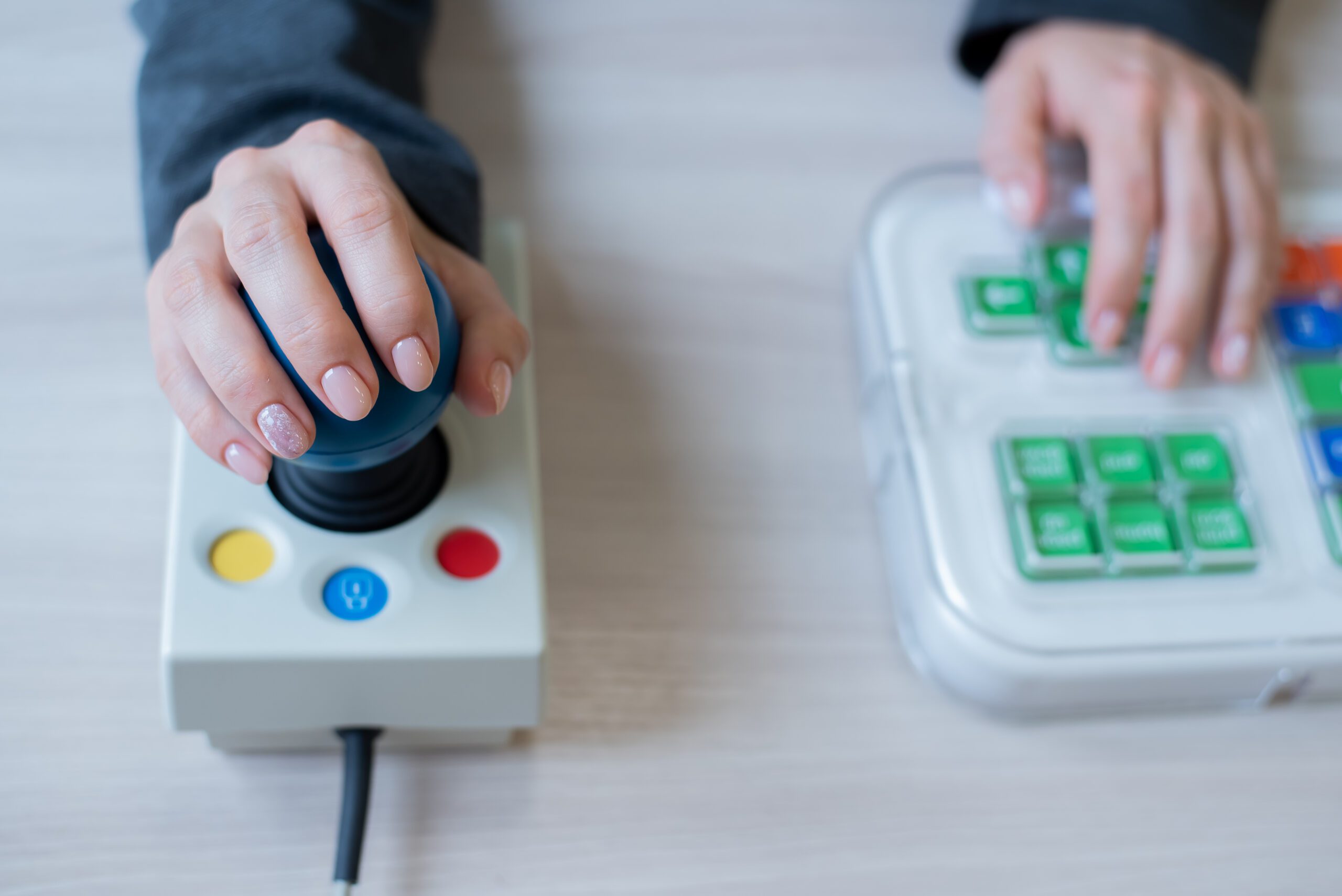Curious about what type of assistive technologies exist and how they might benefit you? Keep reading to hear more on this topic from Joy Redington, Assistive Technology Access Specialist at Vermont Assistive Technology Program at the Department of Disabilities, Aging and Independent Living. They work with individuals of all ages to find accessible solutions that will help with any disability and aging-related needs.
What is Assistive Technology?
Assistive Technology is a term for creative tools and strategies that help people accomplish tasks at home, school, work, and in the community. Assistive technology (AT) plays a crucial role in enhancing the lives of individuals across the lifespan. From infancy to adulthood, and into the golden years of aging, AT offers a wide range of tools, devices, and services that promote independence, improve functionality, and foster inclusion in all aspects of life. This includes both low-tech and high-tech devices, ranging from seemingly simple technology like grabbers and canes to sophisticated technologies like motorized wheelchairs and personal health management equipment. The choice of AT depends on the specific needs and preferences of the individual.


About the Vermont Assistive Technology Program (VATP)
We work to ensure everyone’s potential will be supported holistically, and that each Vermonter will be provided with opportunities for independence and self-determination. Assistive Technology will be incorporated across all systems to create access to every environment in our state and beyond.
VATP is supported by the Administration for Community Living (ACL), U.S. Department of Health and Human Services (HHS) via an annual grant of financial assistance held by HireAbility, a Division of the Department of Disabilities, Aging and Independent Living. We partner with the Center on Disability and Community Inclusion (CDCI) at the University of Vermont and jointly operate three regional AT Tryout Centers (Burlington, Waterbury, and Castleton) to provide AT Services to all Vermonters. These centers serve as valuable resources for individuals to explore and experience various AT devices before making a purchase. The AT Tryout Centers provide information on AT tools, strategies, and related resources, offering demonstrations and short-term equipment loans. This hands-on approach allows individuals to make informed decisions and select the most appropriate AT solutions based on their unique needs and preferences. Our Tryout Centers currently operate by appointment only. Demonstrations can also be conducted online.
Our lending library contains over 2,000 pieces of AT that are available for loan and demonstration, fully browsable online. The best part is membership and loans are free, including shipping! An individual can request a loan for up to 30 days. Please visit our online catalog at: www.vt.at4all.com to see what we have in our inventory.
For more information about the Vermont Assistive Technology program please visit https://atp.vermont.gov/, Email [email protected], or call 1-800-750-6355.


Bridging the Gap to Independence
As individuals age, AT becomes increasingly important in maintaining independence, enabling active aging, and supporting daily living activities. AT can range from mobility aids and vision enhancement devices to personal care and communication technologies. It allows older adults to live independently, participate in social activities, and age in place. The use of AT can significantly impact the quality of life for aging individuals, reducing the need for long-term care and enhancing overall well-being.
Likewise, one program that works organically in tandem with the VATP, is Money Follows the Person (MFP). MFP is a program that provides qualified individuals assistance with transitioning from an inpatient facility (i.e., nursing home) to a home and community-based setting. This support includes funding towards AT to facilitate activities of daily living and aging in place. Supporting aging in place is an important part of reinforcing a person’s path to independence. For instance, some folx have worked with us here at VATP to try items such as phone amplifiers, digital assistants (i.e., Alexa), shower benches, grab tools, etc.
To give you an idea, a person with cerebral palsy who is now aging and wanted to maintain their independence reached out to us. They have a speech impairment that makes communication difficult, especially via phone, as well as mobility challenges that affect fine motor abilities. They needed a way to call a relative at any time who could understand them. By using a switch-activated landline phone with a remote pendant, they could dial their contact even while in bed allowing them to stay independent in their home.
VATP also provided a loan of an Alexa Show to the family member of a person living with the beginning stages of dementia. With memory care sometimes hard to secure in Vermont, they wanted to extend the person’s ability to stay in their current assisted living facility. They used the Alexa Show to add reminders for mealtimes, medications, and facility events. It has been helpful so far and the staff are adding reminders to other activities to expand its usefulness. This is a prime example of increasing independence by using MFP in tandem with AT.
For more information about Money Follows the Person including eligibility requirements please visit: https://asd.vermont.gov/services/mfp-program
AT is for every-body and all abilities. AT enables people to live healthy, productive, independent, and dignified lives and to participate in education, work, and in the community.
Joy Redington, Assistive Technology Access Specialist at Vermont Assistive Technology Program
Most importantly, AT has the amazing effect of raising self-esteem and hope. I am proof of this. In the writing process alone, I used built-in dictation software available in Microsoft Office to type and color overlays (For example: Color Overlays for reading) that I can lay on my screen or on printed text to help me read and edit. I also use an adjustable-height desk to fit my power wheelchair.
Hobbies are an important part of life. Personal enjoyment is sometimes overlooked when exploring AT. For myself, I love watching anime and listening to books. With the help of subtitles and audiobook apps such as Audible, I am able to fully enjoy them. It is because of AT I am able to be more independent and enjoy every aspect of my life, including work, play, and just being.


